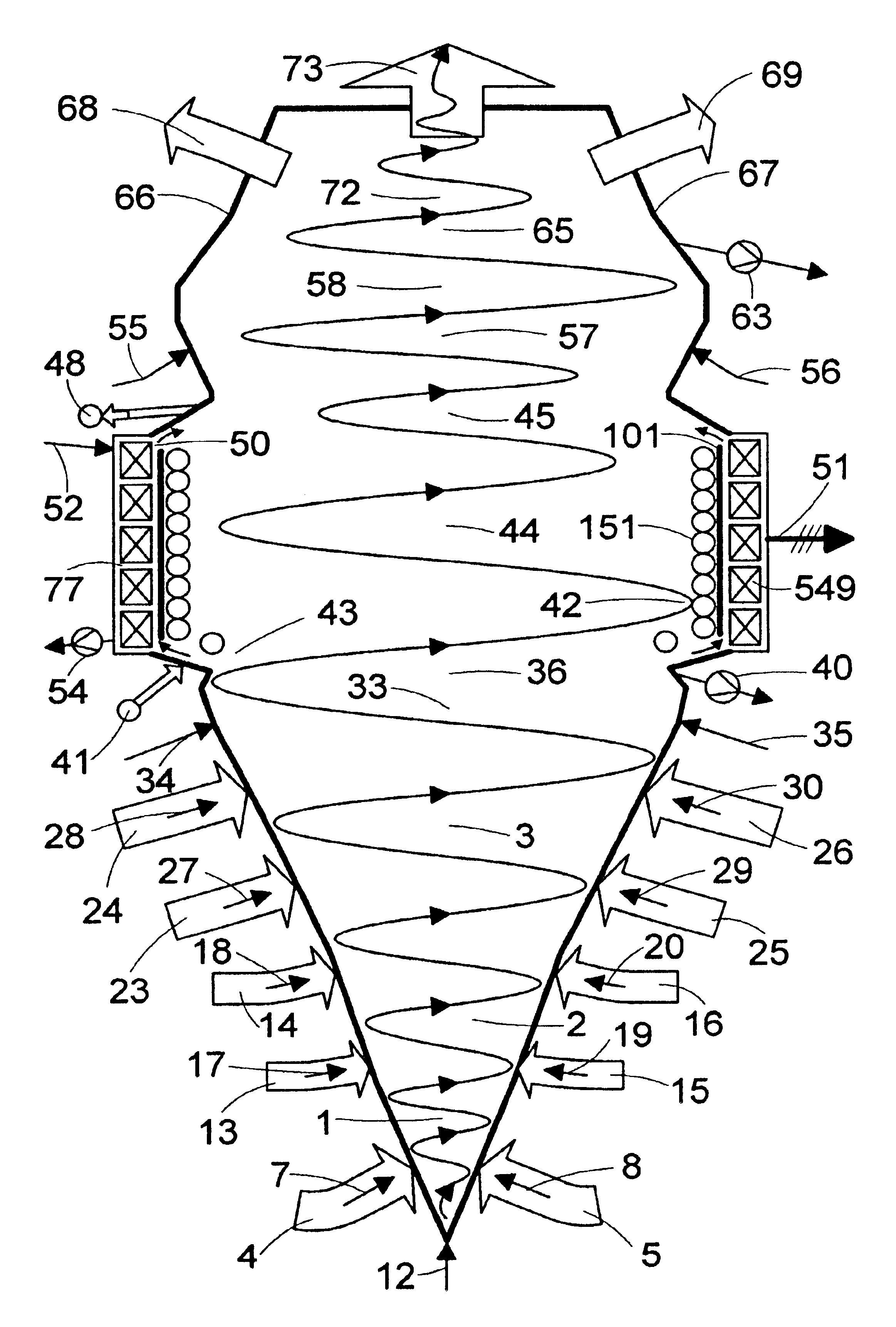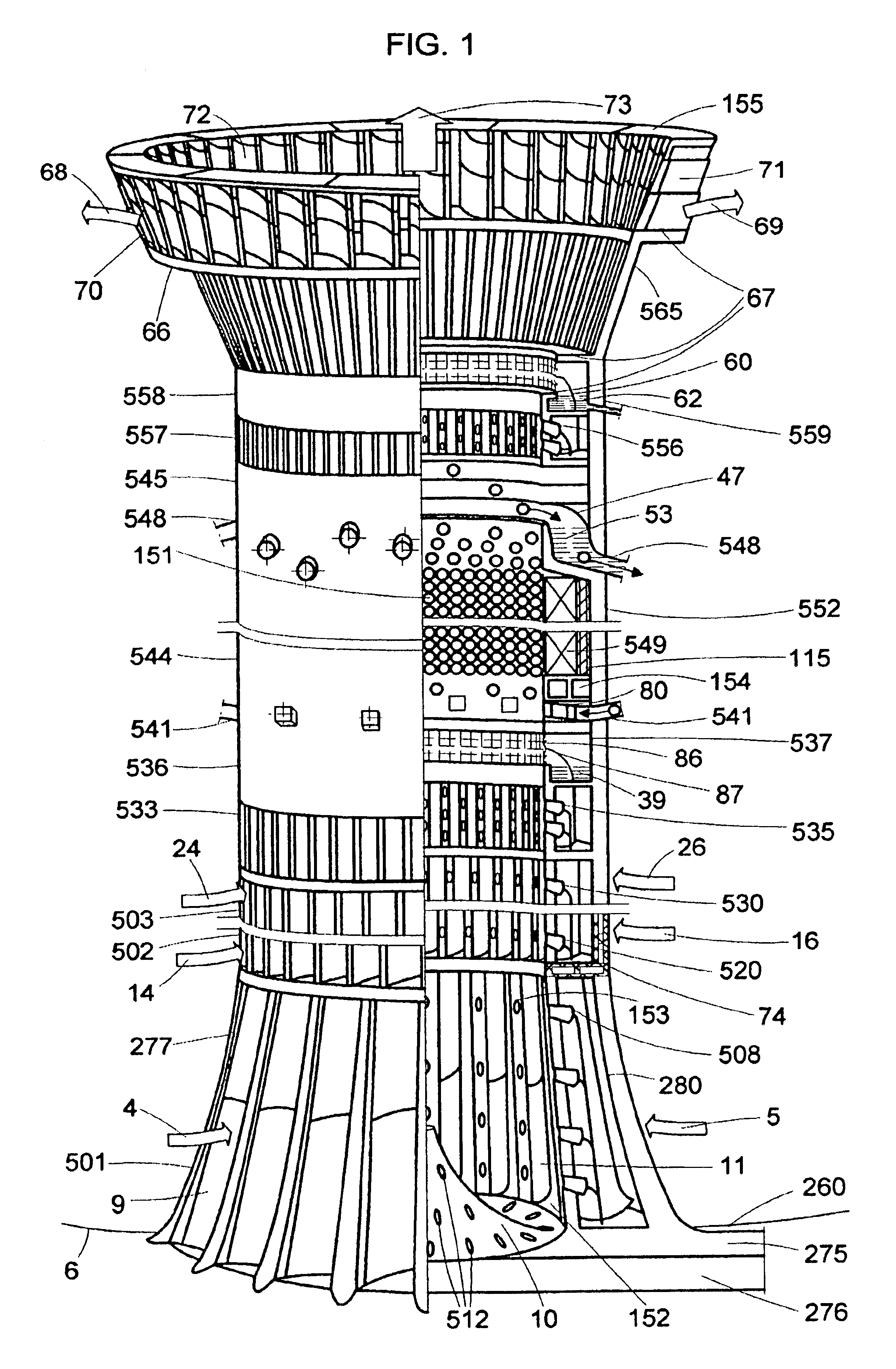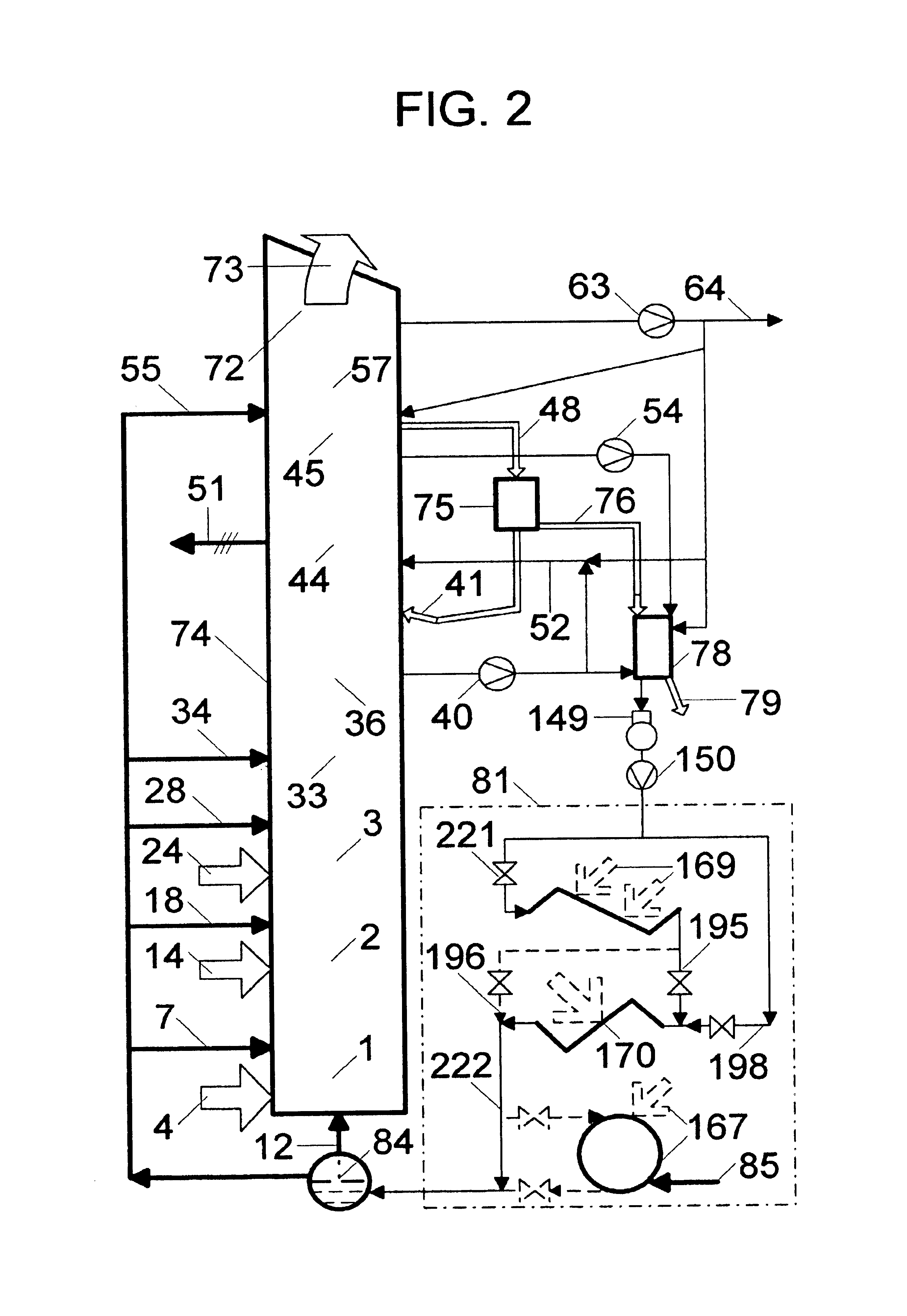All-weather energy and water production via steam-enhanced vortex tower
a technology of vortex tower and water supply, which is applied in the direction of dynamo-electric machines, sustainable buildings, energy industry, etc., can solve the problems of limited number of air turbines used before the chamber, the vortex flow is not controlled in different directions, and the chamber cannot be adaptable for direct power generation, etc., to prolong the annual operation time and ensure stability
- Summary
- Abstract
- Description
- Claims
- Application Information
AI Technical Summary
Benefits of technology
Problems solved by technology
Method used
Image
Examples
first embodiment
[0052]In the first embodiment the steam enhanced vortex power plant preferably comprises (FIGS. 1-4):[0053]a wind vortex tower with spatial system of circular rows of steam nozzles as 507, 508, 512, 517-520, 527-530, 534, 535 accelerating jets of saturated steam as 7, 8, 12, 17-20, 27-30, 34, 35, circular rows of inlet air nozzles accelerating airflows as 4, 5, 13-16, 23-26, a condensate separator 536, a flow-through electric generator 544 with whirled universe of magnetic concentrators as 151, and exhausting units with similar rows of steam nozzles as 555, 556 accelerating steam jets as 55, 56 and air nozzles in a re-enhancer 557, a second condensate separator 558, and a diffuser having several stages as 565; 66, 67; 70, 71; a heating system 81 giving hot water 222 to flash-off drums as 84 integrated with steam nozzles and having circulation 83. The system can have alternatively one or two compatible kinds of heat sources with regime, seasonal or off-season storage (For instance, i...
second embodiment
[0151](b) An outside zone 267, 268, 269 with barrier 266 and depression with dense coverage and fencing 272. In this invention the steam-enhanced vortex plant produces water and conditioned air, having a tower that is a simplified version of the tower described above, and comprises (FIG. 5): the energizer 501, swirlers 502, 503, re-enhances 557, separator 558, diffuser 565, and a conditioner 283 directing airflow 284 conditioned via tracks of cooler water 285, warmer water 286 and steam 287, 288 with flexible water and steam nozzles as 289, 290, 291, 292.
[0152]The conditioner 283 can turn and has adjustable retractile fins 293 directing airflow 284 according to location of conditioned landscape zone during the calm. During the winds is used an ejecting exhaust effect via a lee-side turning of an opening 294.
third embodiment
[0153]Control of the airflow 284 is made in wide ranges of ambient air parameters for favorable partial corrections of local weather via initiation or minimizing of the clouds, rains, and temperature changes. In the third embodiment the steam-enhanced vortex plant produces only water and is additionally simplified version of the simplified tower described above having diffuser with retractile vanes as 70, 71 and adjustable fins as 155 in FIGS. 1, 4.
The Process and Functioning of the Vortex Power Plant
[0154]Details of the process are disclosed with respect to main regimes of functioning such as plant starting-up, operation under power loading and switching out at the calm, insufficient and sufficient winds.
[0155]At starting-up under the calm the supplementary heat source is used directly or through storage of water heated nearly to 100° C. The flash-off drums with steam nozzles in the tower are heated up preliminary through water circulation as 83. The condensate systems and pools of...
PUM
 Login to View More
Login to View More Abstract
Description
Claims
Application Information
 Login to View More
Login to View More - R&D
- Intellectual Property
- Life Sciences
- Materials
- Tech Scout
- Unparalleled Data Quality
- Higher Quality Content
- 60% Fewer Hallucinations
Browse by: Latest US Patents, China's latest patents, Technical Efficacy Thesaurus, Application Domain, Technology Topic, Popular Technical Reports.
© 2025 PatSnap. All rights reserved.Legal|Privacy policy|Modern Slavery Act Transparency Statement|Sitemap|About US| Contact US: help@patsnap.com



